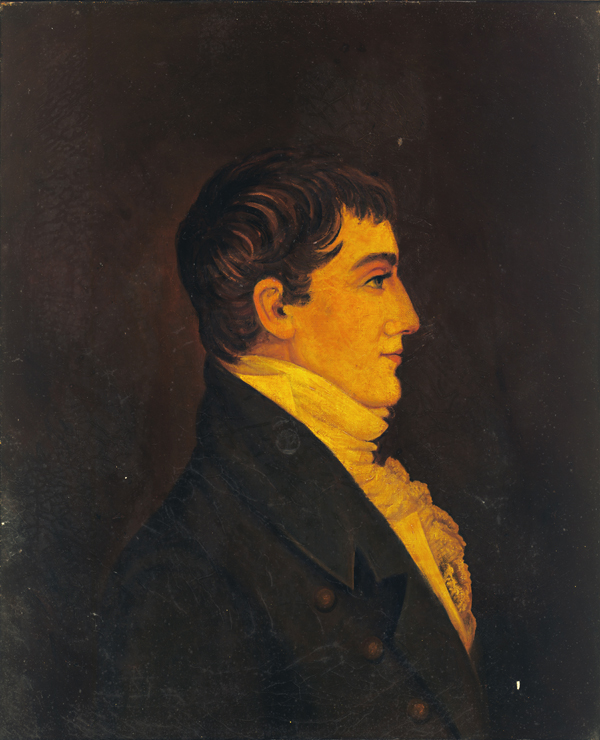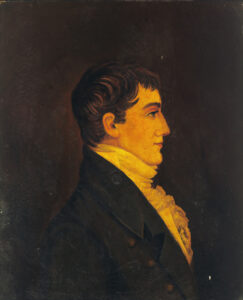Thomas Bolling Robertson
The third governor of Louisiana after its admission as a state, Thomas Robertson served from 1820 to 1824.

Courtesy of Louisiana State Museum
Governor Thomas Bolling Robertson. St. Mart, Lucienne de (Artist)
The third governor of Louisiana after its admission as a state, Thomas Robertson served from 1820 to 1824. A native of Virginia, Robertson came to Louisiana in 1807 when then President Thomas Jefferson appointed him secretary of the Territory of Orleans. He retained this position until 1812, when he successfully ran for the US House of Representatives. His term as governor was marred by increasing tensions between French Creoles, who had occupied the region since the colonial era, and Anglo-American newcomers who migrated to the state after the Louisiana Purchase in 1803. Though he made a number of internal improvements, Robertson left office amidst scandal and controversy.
Thomas Bolling Robertson was born in 1773 in Prince George County, Virginia, into an ambitious, prestigious family. His father, William Robertson, a Petersburg merchant, later became a vestryman, warden, the deputy of Bristol Parish, and secretary of the Council of Virginia. His mother, Elizabeth Bolling Robertson, claimed descent from Pocahontas. After graduating from William and Mary College in 1795, Robertson practiced law in Virginia until President Thomas Jefferson appointed him secretary of the newly acquired Territory of Orleans on August 12, 1807. While in this position, he also served as a federal land commissioner and, from March 8 to September 3, 1808, as state attorney general.
Robertson’s service in the territory was marked by bitter clashes with the first American governor of Louisiana, William C. C. Claiborne, who believed Robertson was plotting against him. In contrast, Robertson remained on good terms with Jefferson and President Madison. He retained his post as secretary until Louisiana’s admission as a state in 1812, but tendered his resignation in 1818 to become the first member of the US House of Representatives from Louisiana. During his congressional tenure he visited Europe and dispatched a series of letters to the Richmond Enquirer, many of which were published in the book, Journal of Events in Paris (1815).
Elected governor of Louisiana in 1820, Robertson successfully implemented a series of internal improvements such as the opening of the Pearl and Red rivers to navigation and the construction of the state’s portion of the national road, stretching from Madisonville to Nashville, Tennessee. He also supported the creation of the Bank of Louisiana in 1824 and the expansion of the region’s commercial facilities. Robertson funneled money derived from the licensing of New Orleans gambling houses to the Collège d’Orléans and Charity Hospital, hoping to strengthen those institutions.
Despite these achievements, Robertson’s term was blighted by serious and occasionally violent clashes between Creoles and Americans, both of whom were struggling for political control of the state. In addition, he outraged many of his constituents when he vetoed a usury bill in 1823. Robertson maintained that the bill gave the government too much control over businesses and was an unwarranted invasion of property rights. This conflict was heightened by a growing eccentricity in his personal behavior that climaxed when he carelessly deposited uncounted state election returns in his dog’s bed.
Robertson resigned from the governor’s office to become the US judge for the District of Louisiana in 1824. He died at White Sulphur Springs, Virginia, on October 5, 1828, where he was interred.
Adapted from Joseph G. Tregle’s entry for the Dictionary of Louisiana Biography, a publication of the Louisiana Historical Association in cooperation with the Center for Louisiana Studies at the University of Louisiana, Lafayette.
